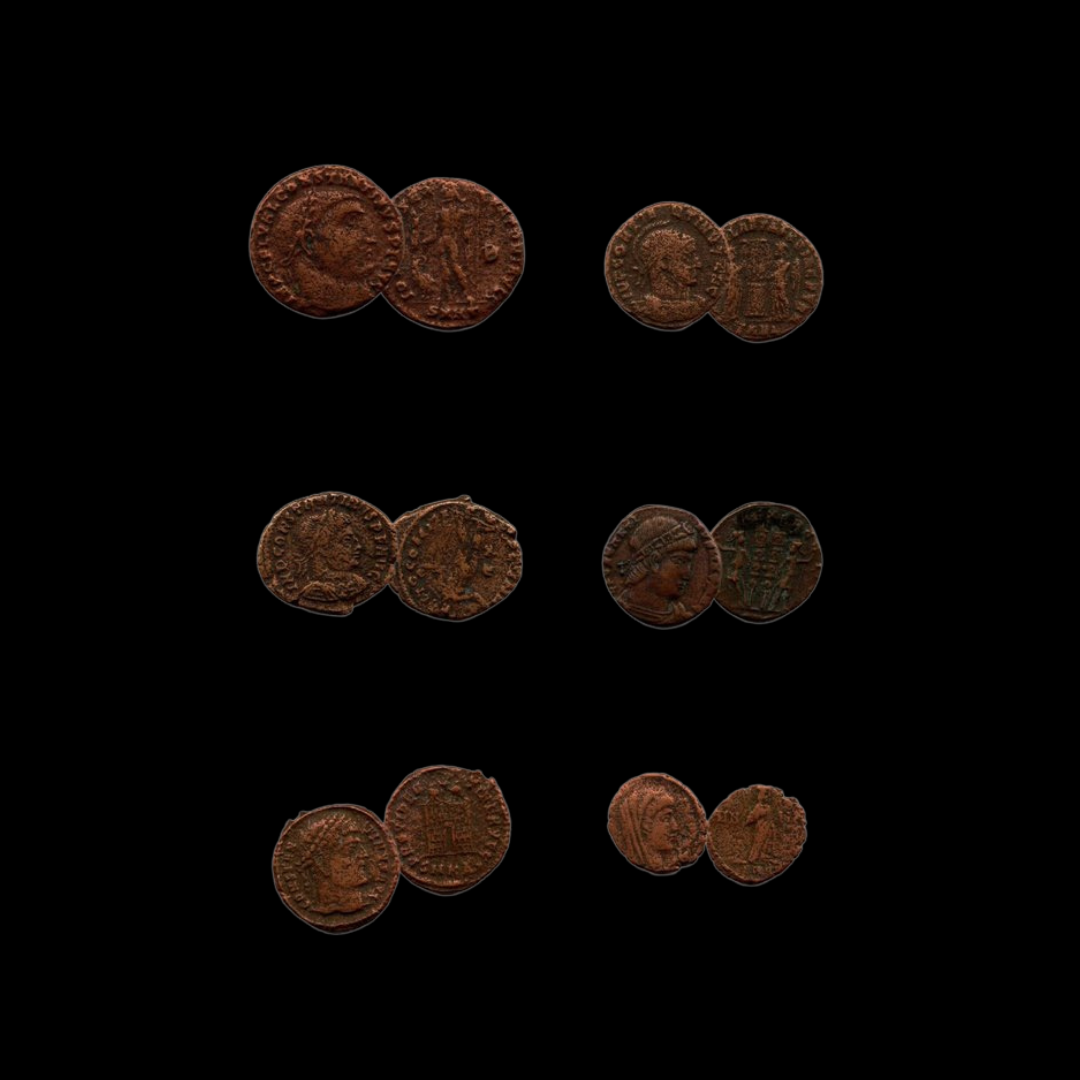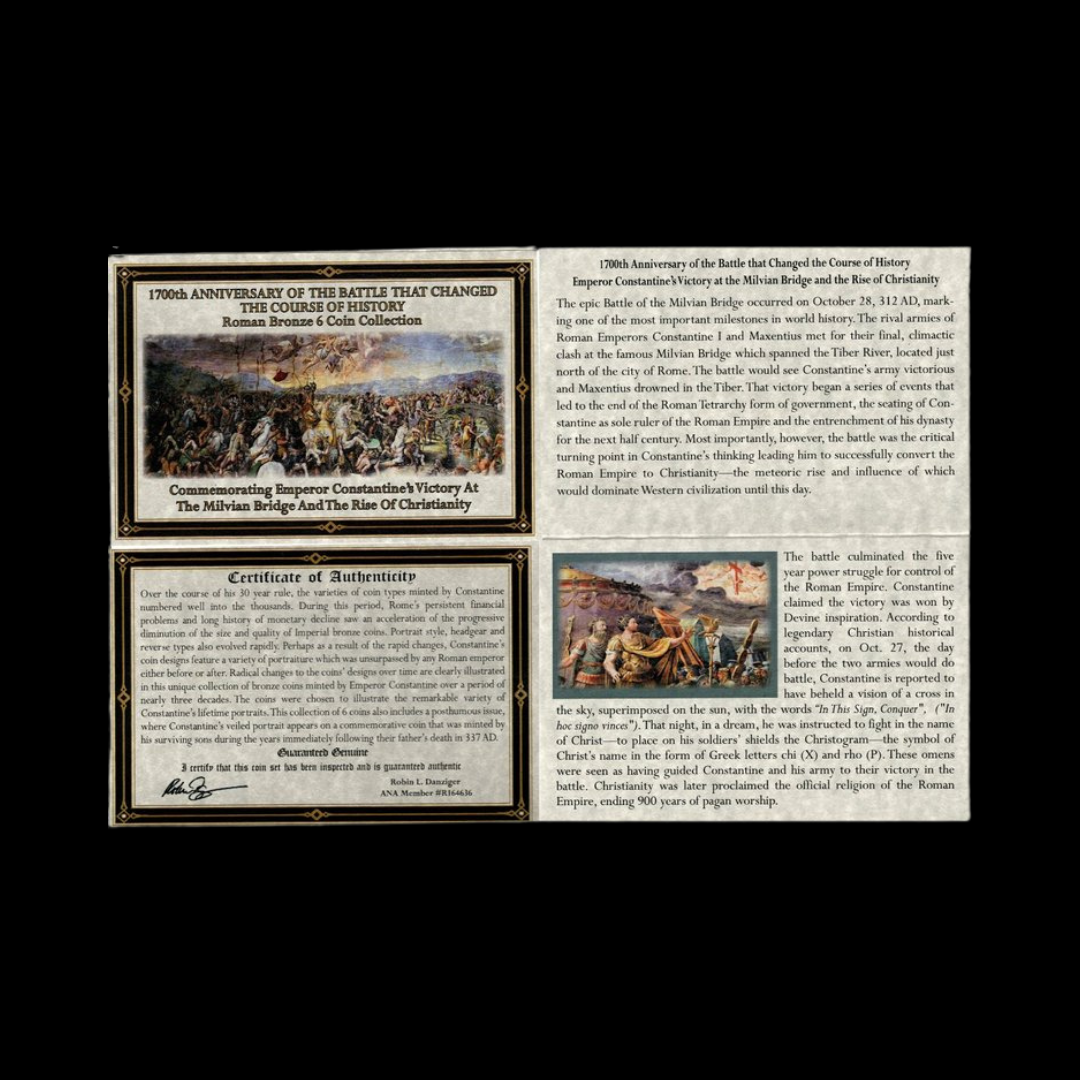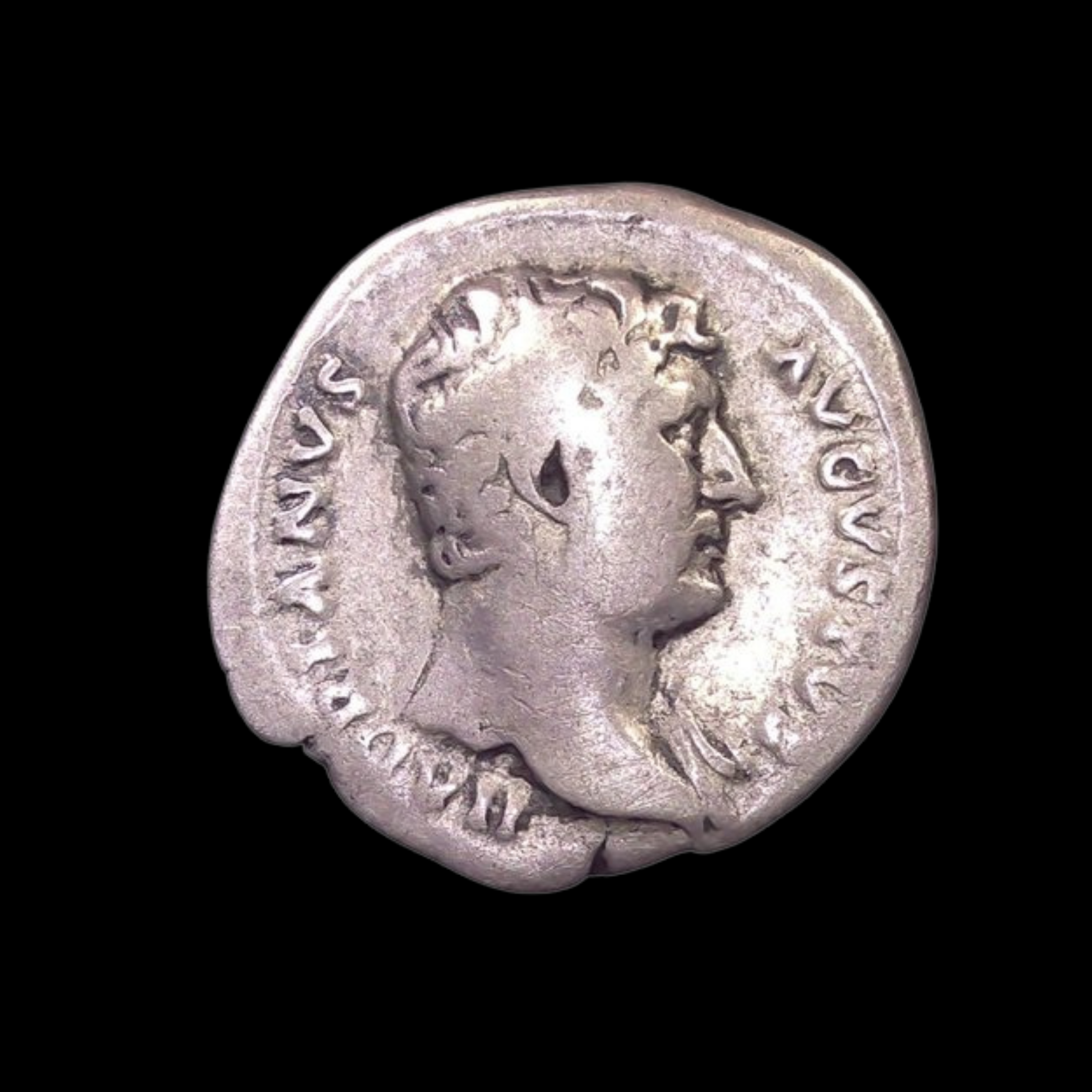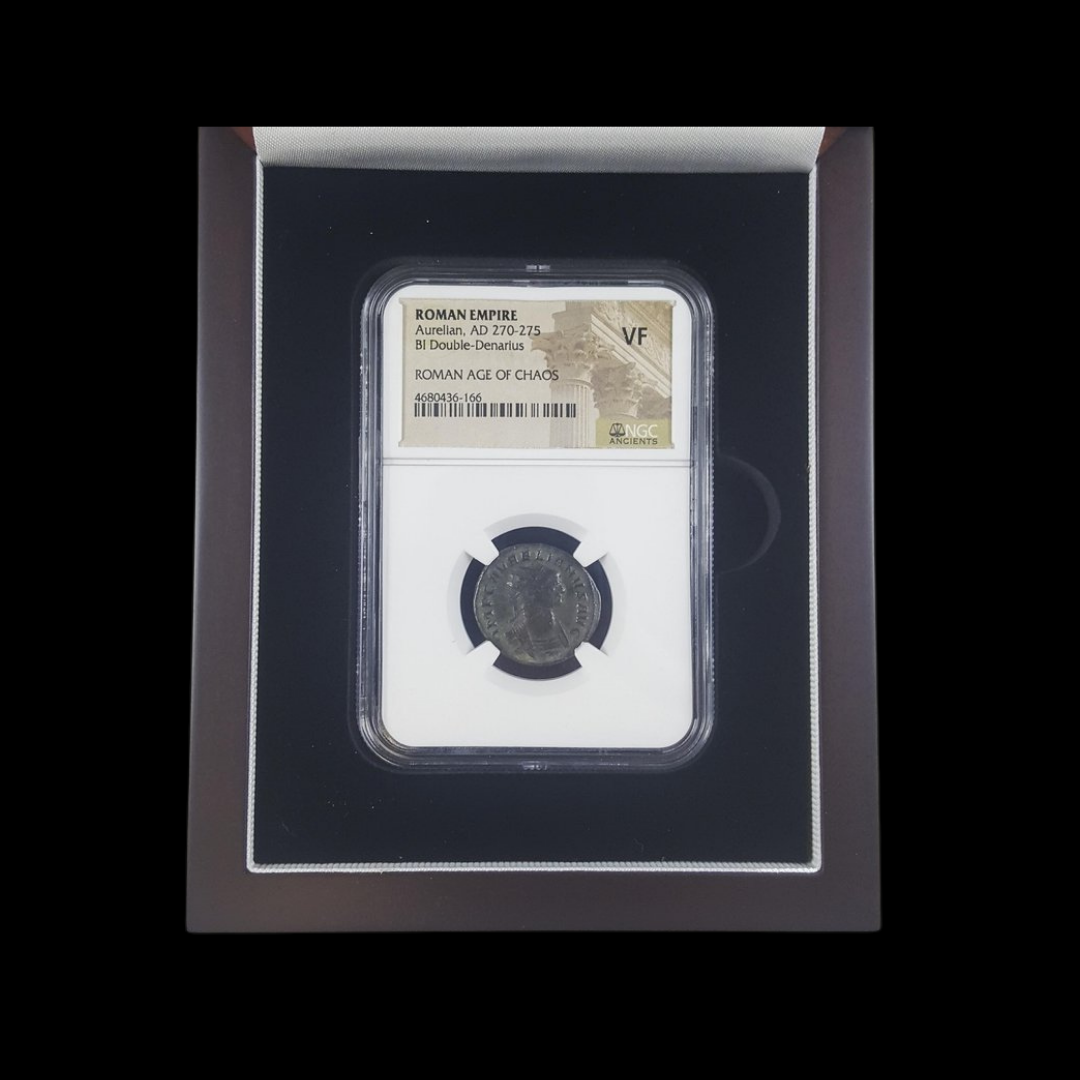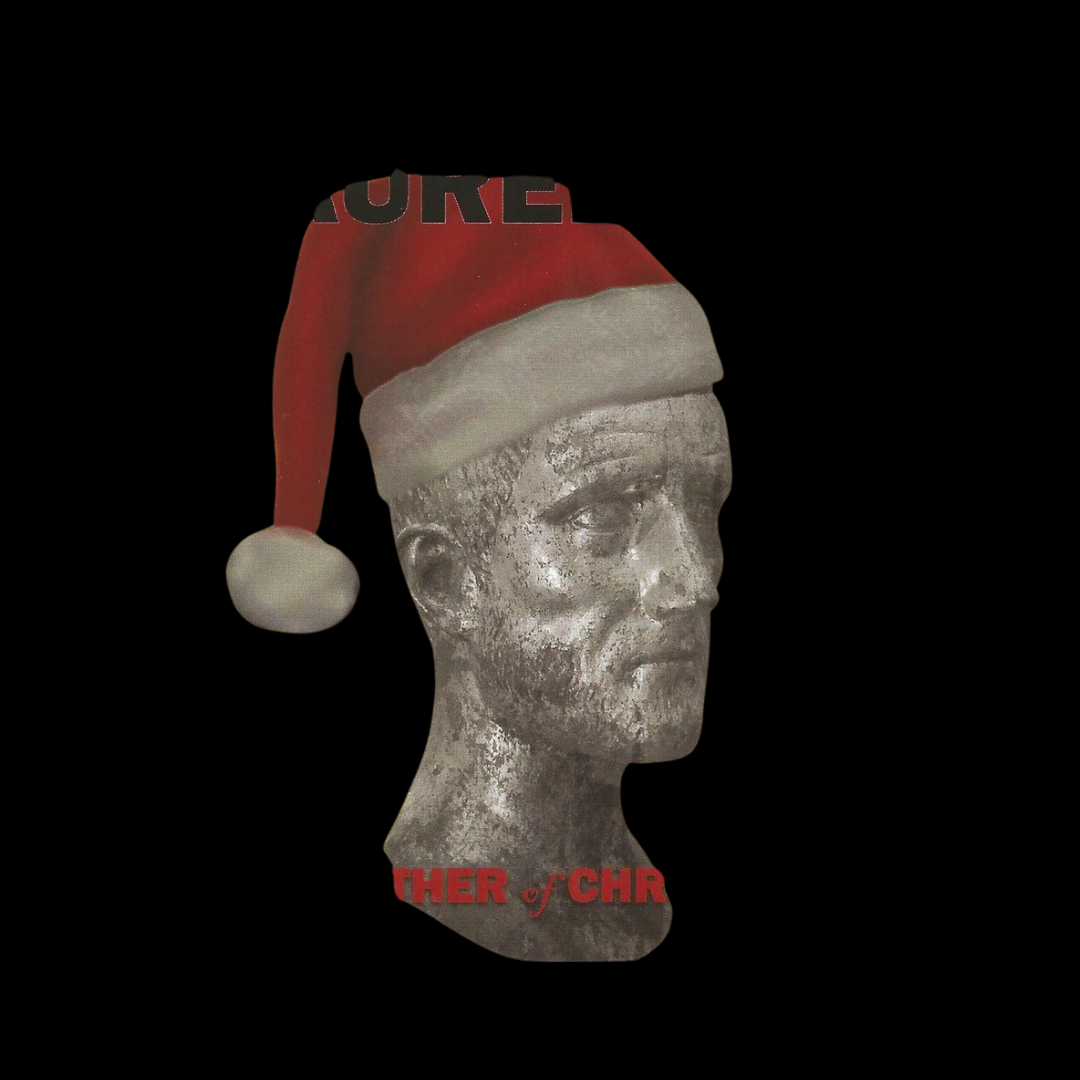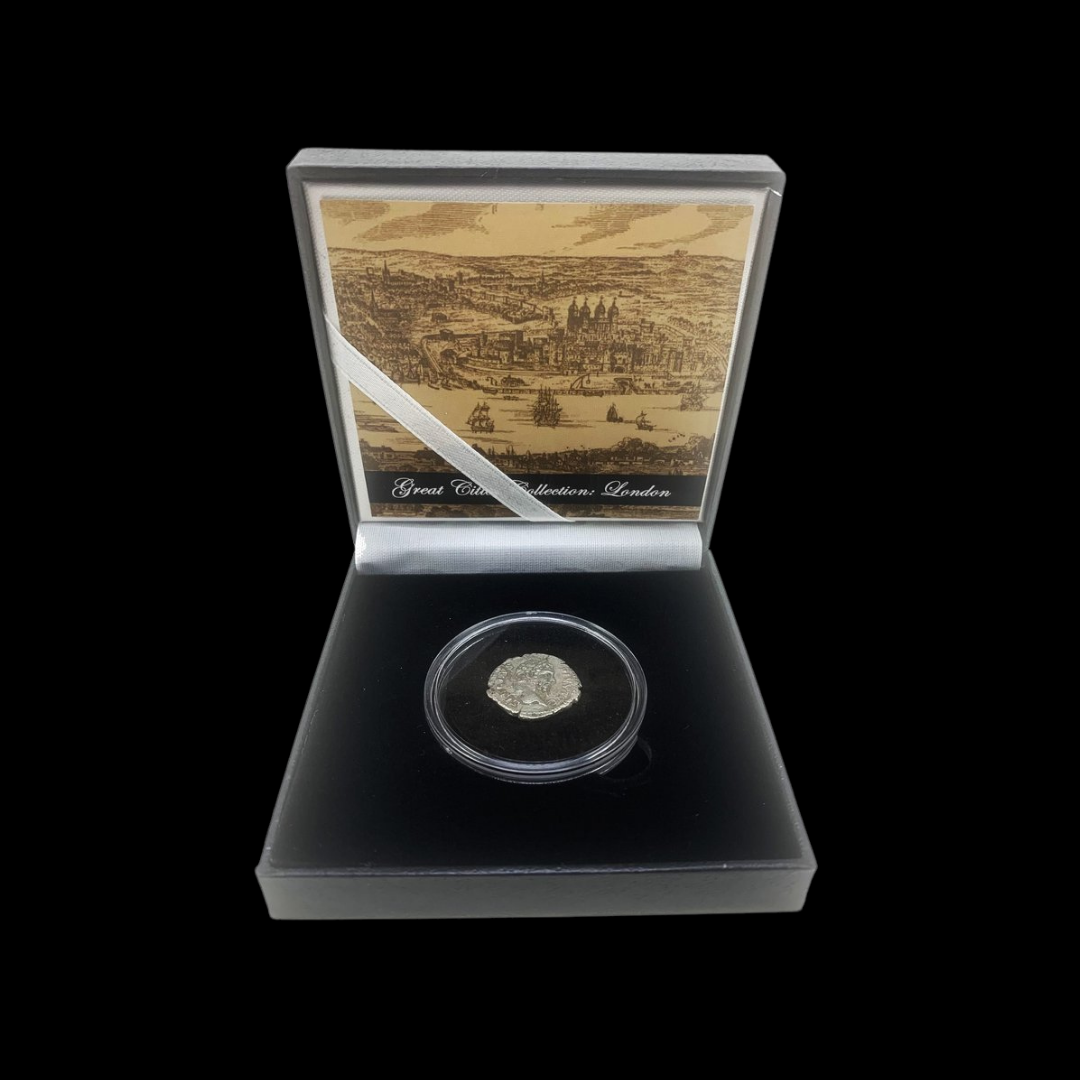 Image 1 of 6
Image 1 of 6

 Image 2 of 6
Image 2 of 6

 Image 3 of 6
Image 3 of 6

 Image 4 of 6
Image 4 of 6

 Image 5 of 6
Image 5 of 6

 Image 6 of 6
Image 6 of 6







Aelia Flacilla Roman AE4 (about 1,635-1,665 years ago)
This small bronze coin (AE4 size designation) honors Empress Aelia Flacilla, the influential wife of Emperor Theodosius I. These smaller denomination coins bearing her image would have circulated widely throughout the empire for everyday transactions, spreading imperial propaganda even at the most basic economic level.
Coin Description:
Front side: Portrait of Empress Aelia Flacilla wearing a distinctive imperial headdress and jewelry, with her name and imperial title around the edge
Back side: Possibly shows the empress in prayer or a personification of a Christian virtue such as Peace (PAX) or Victory (VICTORIA)
Technical Details:
Bronze composition (copper alloy)
AE4 denomination (smallest standard bronze coin of the period)
NGC certified (Numismatic Guaranty Corporation)
Minted between approximately 379-386 CE in various imperial mints
Condition: Certified by NGC, specific grade not provided
Historical Significance: This coin reflects how imperial women gained increased visibility in late Roman society through their portrayal on coinage. Born in Roman Hispania (modern Spain), Aelia Flacilla exemplified Christian piety and charity that became the model for Byzantine empresses. The inclusion of her image on smaller denominations ensured her visibility among common citizens, helping to establish the legitimacy of the Theodosian dynasty that would rule both halves of the Roman world into the next century.
This small bronze coin (AE4 size designation) honors Empress Aelia Flacilla, the influential wife of Emperor Theodosius I. These smaller denomination coins bearing her image would have circulated widely throughout the empire for everyday transactions, spreading imperial propaganda even at the most basic economic level.
Coin Description:
Front side: Portrait of Empress Aelia Flacilla wearing a distinctive imperial headdress and jewelry, with her name and imperial title around the edge
Back side: Possibly shows the empress in prayer or a personification of a Christian virtue such as Peace (PAX) or Victory (VICTORIA)
Technical Details:
Bronze composition (copper alloy)
AE4 denomination (smallest standard bronze coin of the period)
NGC certified (Numismatic Guaranty Corporation)
Minted between approximately 379-386 CE in various imperial mints
Condition: Certified by NGC, specific grade not provided
Historical Significance: This coin reflects how imperial women gained increased visibility in late Roman society through their portrayal on coinage. Born in Roman Hispania (modern Spain), Aelia Flacilla exemplified Christian piety and charity that became the model for Byzantine empresses. The inclusion of her image on smaller denominations ensured her visibility among common citizens, helping to establish the legitimacy of the Theodosian dynasty that would rule both halves of the Roman world into the next century.
This small bronze coin (AE4 size designation) honors Empress Aelia Flacilla, the influential wife of Emperor Theodosius I. These smaller denomination coins bearing her image would have circulated widely throughout the empire for everyday transactions, spreading imperial propaganda even at the most basic economic level.
Coin Description:
Front side: Portrait of Empress Aelia Flacilla wearing a distinctive imperial headdress and jewelry, with her name and imperial title around the edge
Back side: Possibly shows the empress in prayer or a personification of a Christian virtue such as Peace (PAX) or Victory (VICTORIA)
Technical Details:
Bronze composition (copper alloy)
AE4 denomination (smallest standard bronze coin of the period)
NGC certified (Numismatic Guaranty Corporation)
Minted between approximately 379-386 CE in various imperial mints
Condition: Certified by NGC, specific grade not provided
Historical Significance: This coin reflects how imperial women gained increased visibility in late Roman society through their portrayal on coinage. Born in Roman Hispania (modern Spain), Aelia Flacilla exemplified Christian piety and charity that became the model for Byzantine empresses. The inclusion of her image on smaller denominations ensured her visibility among common citizens, helping to establish the legitimacy of the Theodosian dynasty that would rule both halves of the Roman world into the next century.
Aelia Flavia Flaccilla (died 386) was a Roman empress and first wife of the Roman Emperor Theodosius I. She was of Hispanian Roman descent. During her marriage to Theodosius, she gave birth to two sons – future Emperors Arcadius and Honorius – and a daughter, Aelia Pulcheria.
According to Laus Serenae ("In Praise of Serena"), a poem by Claudian, both Serena and Flaccilla were from Hispania.[1]
A passage of Themistius (Oratio XVI, De Saturnino) has been interpreted to identify Flaccilla's father as Claudius Antonius, Praetorian prefect of Gaul from 376 to 377 and Roman consul in 382. However the relation is considered doubtful.[2] In 1967, John Robert Martindale, later one of several article writers in the Prosopography of the Later Roman Empire, suggested that the passage actually identifies Antonius as the brother-in-law of Theodosius. However the passage is vague enough to allow Afranius Syagrius, co-consul of Antonius in 382, to be the brother-in-law in question.[3] The only kin clearly identified in primary sources was her nephew Nebridius, son of an unnamed sister.[4]



